While recently visiting Bangkok, I encountered this enormous reclining Buddha. It is a famous pose and a spectacular statue, but it also says much about Buddhism and perhaps even about bigger things – like religion generally and about us funny creatures called humans. Let’s explore this image and see what it might reveal about Buddhism, about religiosity, and about us.
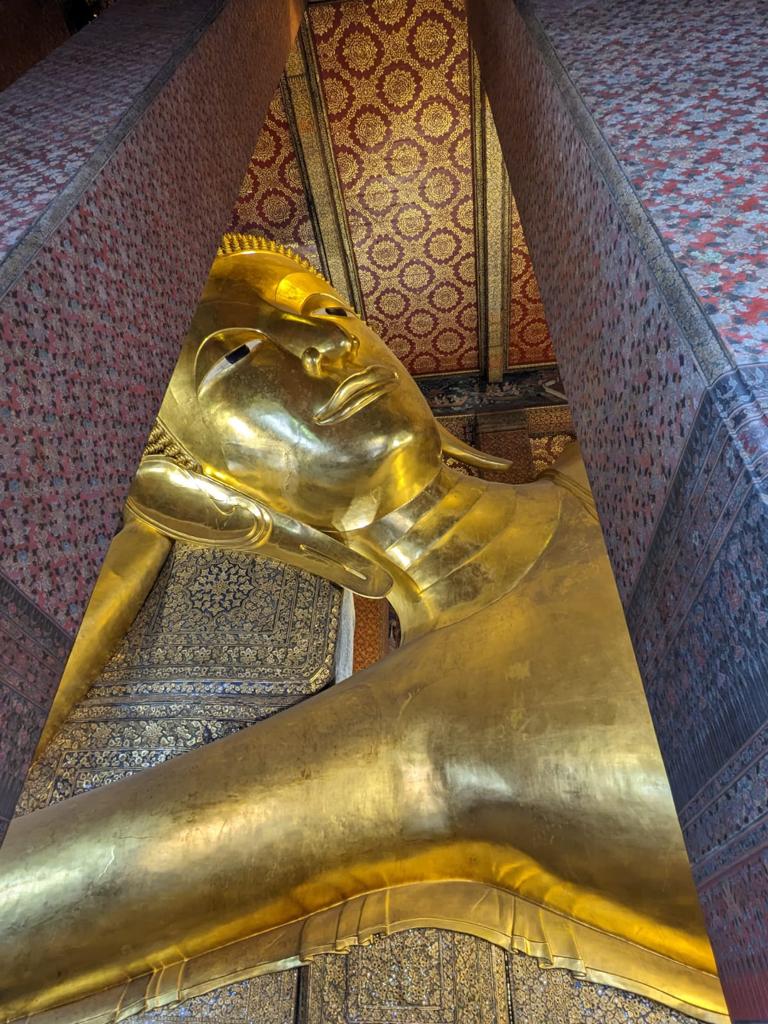
Gigantic reclining Buddha at Wat Pho in Bangkok, Thailand. Photo credit: Brian Carwana.
The Reclining Buddha
The reclining Buddha is the final pose of the Buddha as it shows him dying. He is 80 years old, has contracted food poisoning, and knows the end is coming. According to tradition, he utters famous last words:
“Be lamps unto yourselves. Work out your own salvation with diligence.”
– Mahaparinibbana Sutra
Two things stand out here. First, this is a very unique message. Typically, religious founders are encouraging followers to pay devotion to spiritual beings and deities. The Buddha, however, tells people they need to work purposefully to achieve their own salvation. He essentially says it is up to you – be your own lamps as it were.
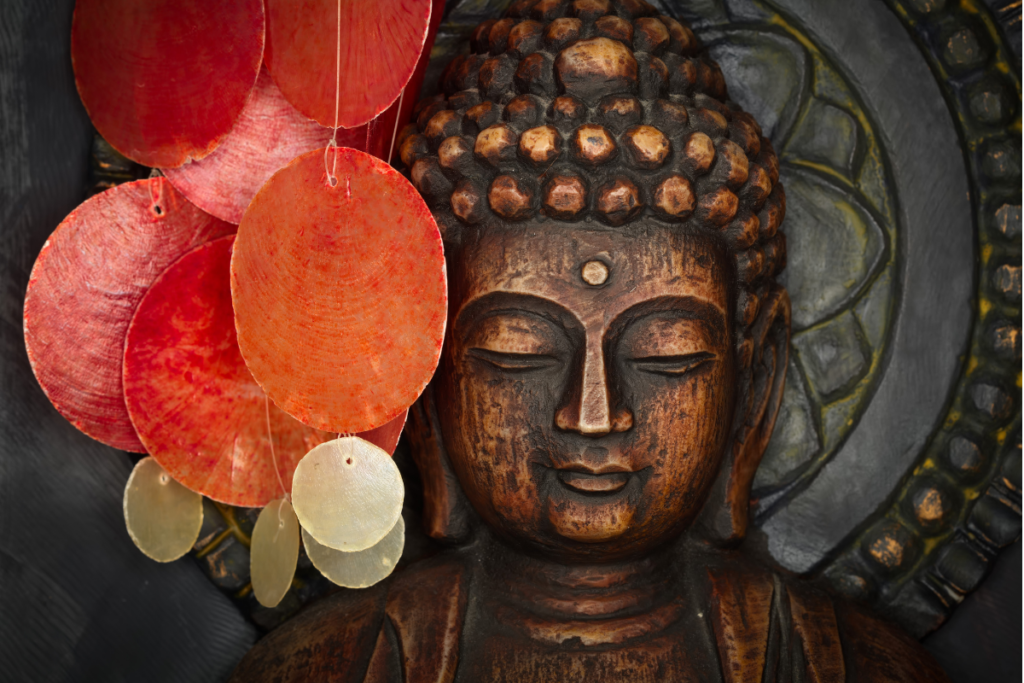
Buddha. Photo credit: Canva.com
Second, despite his fairly clear message that enlightenment is something you must achieve on your own, most Buddhists today have turned to more typical devotional practices. They pray to the Buddha and to a whole range of Buddhist figures. In fairness, this is not universally true as some Buddhists see the Buddha as merely someone who showed the way and maintain that it is up to you to follow the path – he is not really there to be prayed to or to help you. But most Buddhist devotion today looks quite similar to Christians praying to Jesus or Hindus invoking Shiva. What should we make of this?
Religion and Two Types of Effort
In Japanese Buddhism, they observed these two spiritual approaches, one emphasizing self-reliance and one looking more readily to supernatural aid, and they developed two terms to capture this distinction: tariki and jiriki. These words translate as other effort and self effort respectively. I have found these terms helpful in looking at religion more generally. Most paths are not purely one way or the other but you can see how they can lean more in one direction or another.
In Christianity, Luther emphasized other effort (or grace) to the exclusion of all else (sola gratia or “grace alone” was his famous slogan) whereas the Catholic Church maintained more emphasis on one’s deeds playing a big role in salvation. In Hinduism, some join ashrams or become mendicants to pursue an arduous life of meditation and austerities to try to achieve enlightenment but most attend temples and pray to the deities to bless their family and help them through life’s challenges.
Buddhism has a unique manifestation of this in the idea of merit exchange. Monks exert maximum effort to pursue enlightenment and, in doing so, are seen to acquire merit or good karma (an example of self effort). But they need someone to support them. And so, the laity makes donations to feed and house them and, in doing so, perform a good deed by which they acquire some of the monks’ store of good karma. The laity then are relying more on other effort but the other helping you in this instance is not a spiritual being but the human monk in front of you.
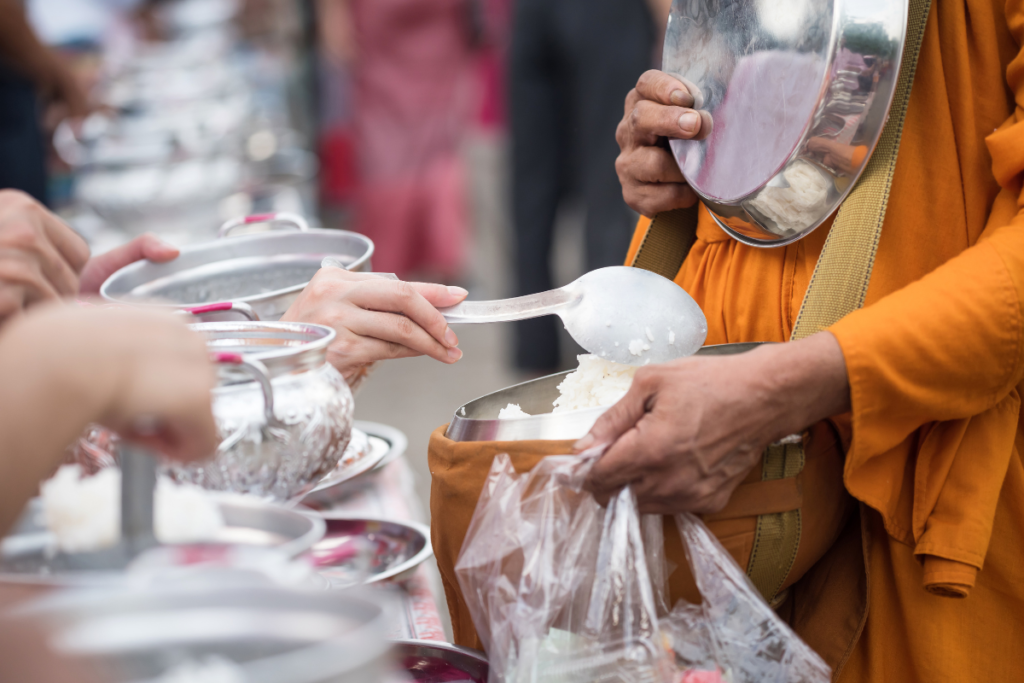
The Buddhist laity supports the monks. Via this generosity, the laity performs a good deed and acquires some of the monks’ karmic merit. Photo credit: Canva.com
About Us Humans
Let us return to that statue. How interesting that at this very temple where the dominant image is of the Buddha dying and telling people to work diligently to achieve enlightenment (jiriki), the temple practices are overwhelmingly devotional prayers seeking blessings (tariki). Here we have a tradition whose very founder made very unusual statements not encouraging worship but worship surrounds you at every turn.
What can we learn from this?
I think when you look at religious practices across history, you see a fairly consistent theme of people seeking support from someone – a god, local spirits, ancestors, maybe a Buddha, etc. Who they reach out to varies but reach out we mostly do. I think this says something profound about the fact that humans often find life here hard. People bury their children (historically, quite common), they face the perils of hunger (again, historically a norm), and even in modern life with its amenities, we struggle with stresses, disappointments and fears. We yearn for something better, calmer, and safer.
Religion is many things. It includes ethics, philosophy, community, art, etc. But whatever else religion is, I think it is wise to remember that it is partly a cry from the heart. We are willing of course to also apply ourselves to making life better but often, we feel we could really use a little help.
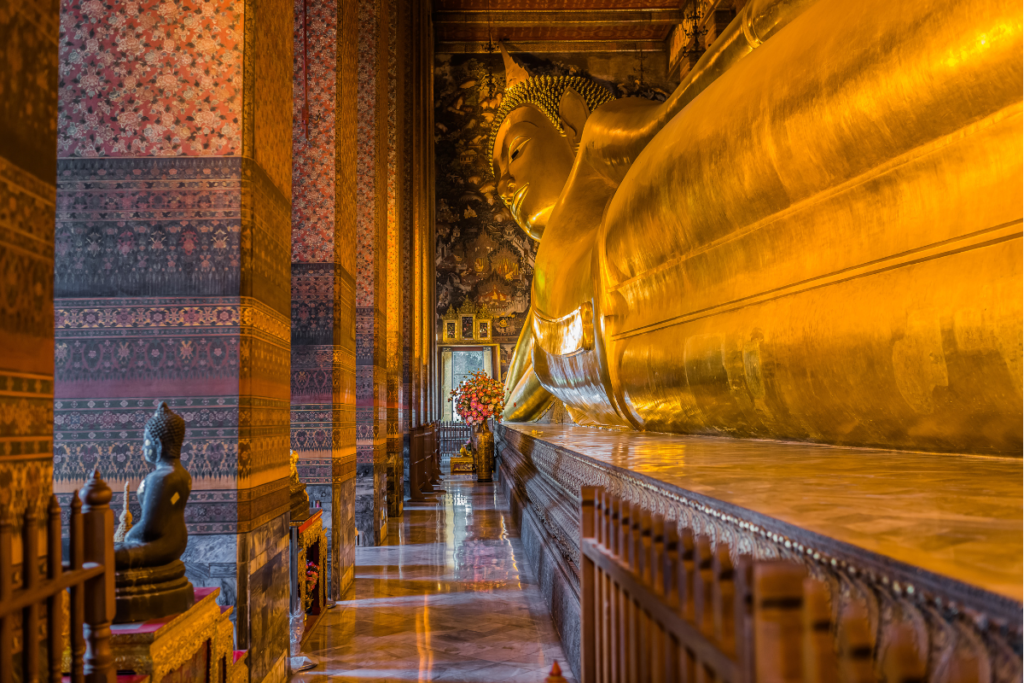
Photo credit: Canva.com

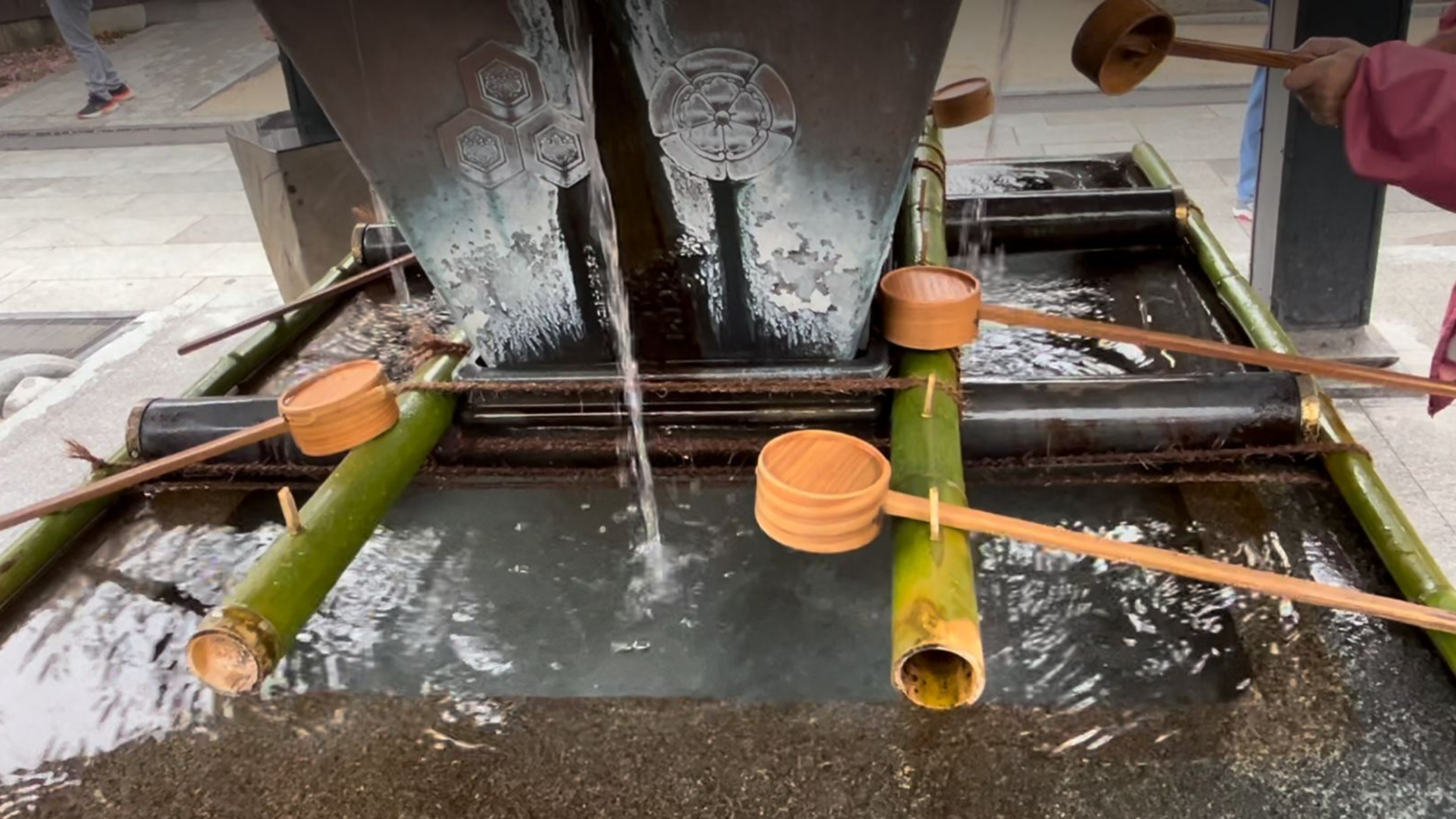
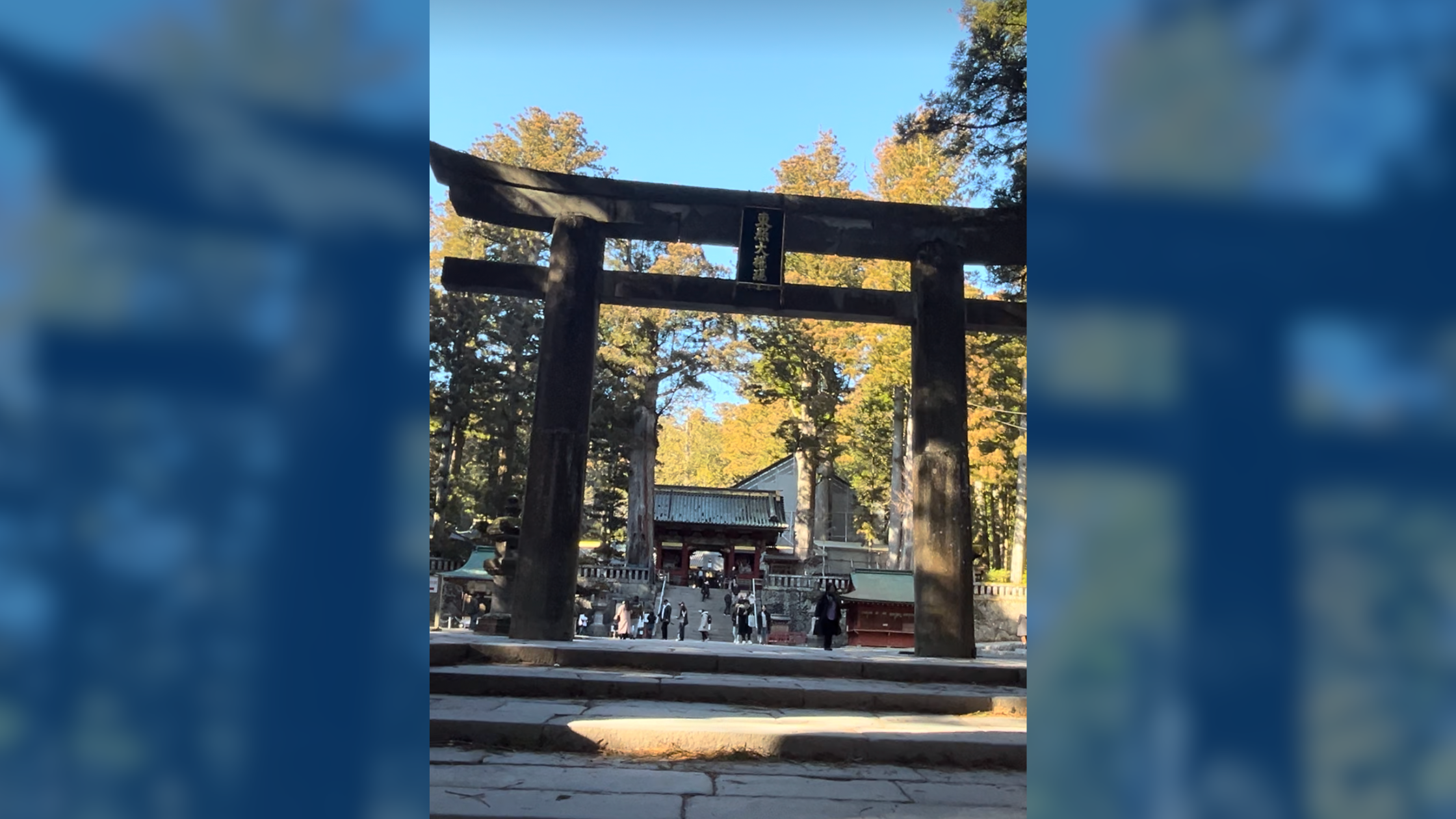
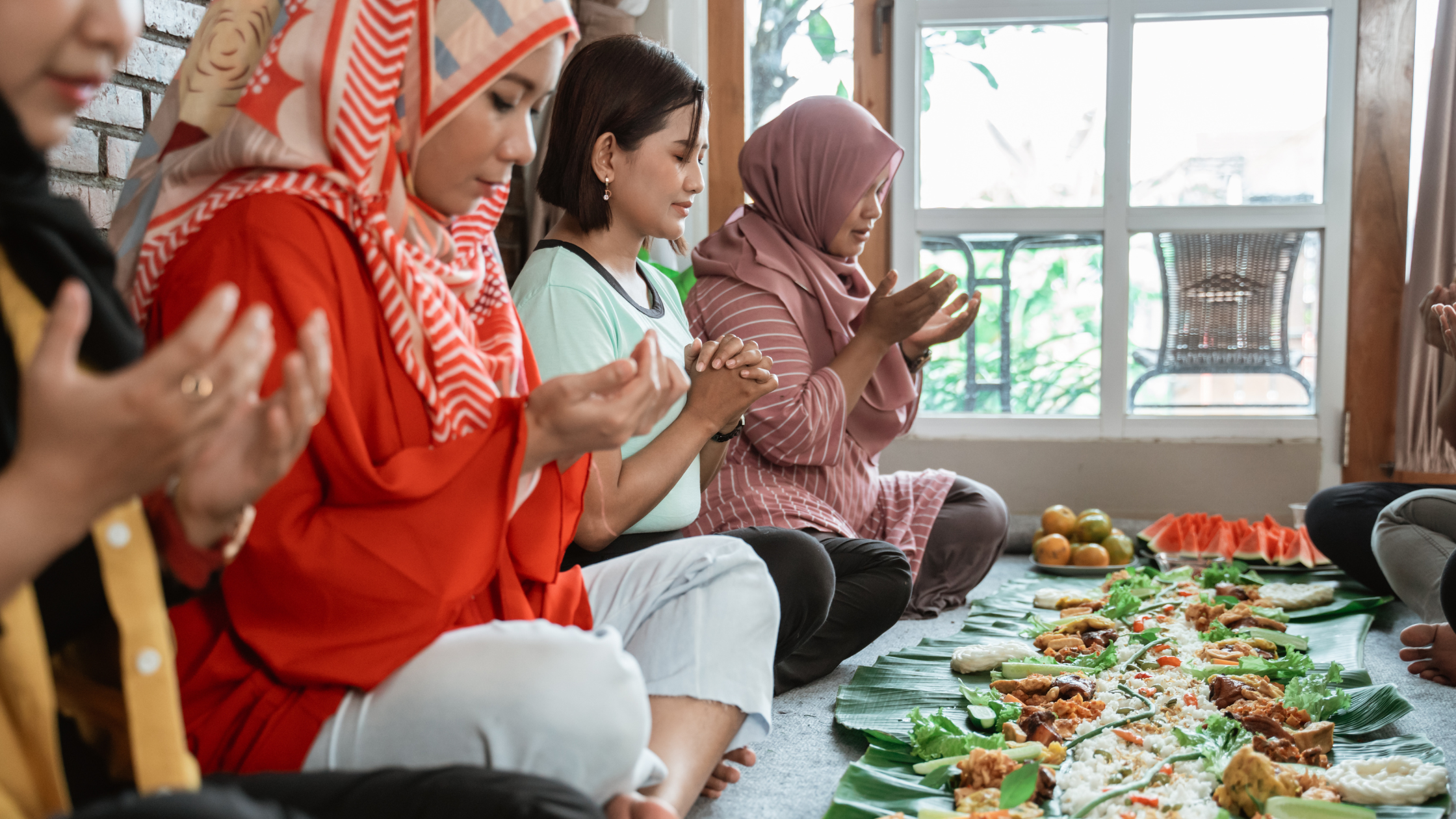

In your Blog “The reclining Buddha” I found your statement “I think when you look at religious practices across history, you see a fairly consistent theme of people seeking support from someone – a god, local spirits, ancestors, maybe a Buddha, etc. Who they reach out to varies but reach out we mostly do.” to be on the mark. I haven’t thought of it in that way before and it is a good quote to remember when we talk with others about worship and God.
Thanks for your work
Thanks Dan. There are similarities for sure across traditions. The searching for solace is certainly one IMO.